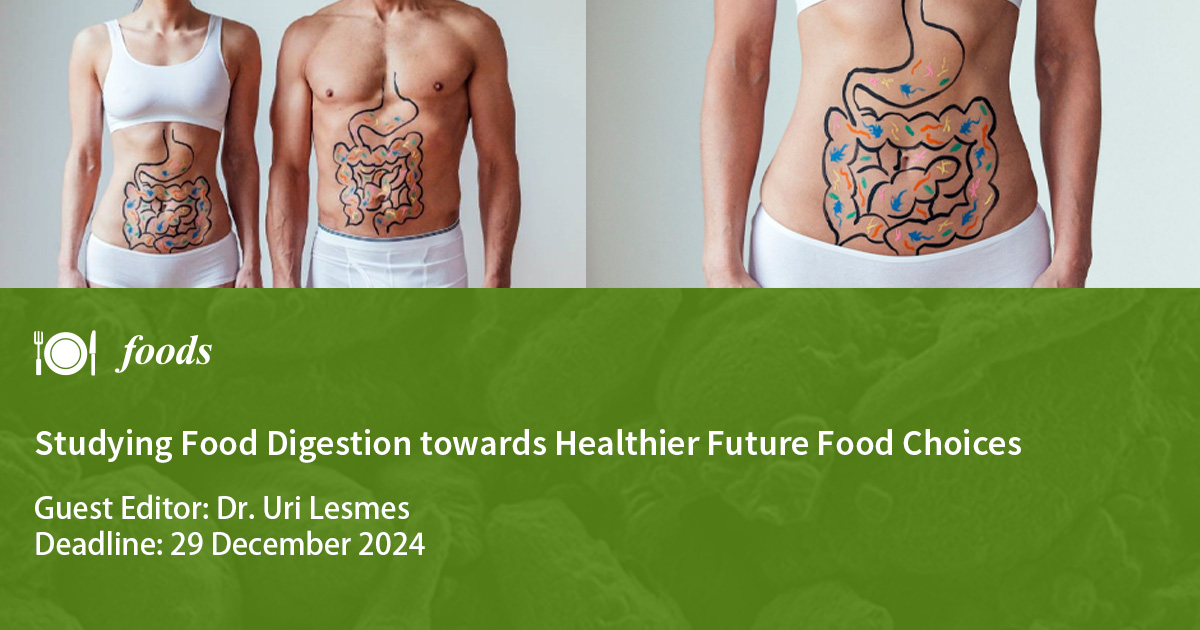Studying Food Digestion towards Healthier Future Food Choices
A special issue of Foods (ISSN 2304-8158). This special issue belongs to the section "Food Engineering and Technology".
Deadline for manuscript submissions: closed (31 March 2025) | Viewed by 12161

Special Issue Editor
Interests: bioaccessibility, bioavailability and safety of nutrients and food bioactives; in vitro models of the human gastro-intestine system; development of specialty and personalized foods as well as the nutritional management of the colon microbiome; advanced analyses of foods (foodomics); structure–function relationships of food ingredients; novel food ingredients; food-grade delivery systems; rational design of emulsions and food hydrocolloids
Special Issue Information
Dear Colleagues,
Advanced food processing technologies, the re-formulation of foods, and futuristic foods such as cultivated meat and plant-based food analogues, captivate human imagination and open avenues to revolutionizing our plates. Yet, the development of such food choices and precise human nutrition require a fundamental understanding of food’s digestive fate to ensure safety and optimize its delivery to different individuals. Moreover, the ever-increasing use of advanced analytical tools and artificial intelligence open new horizons for rationally designing human food choices. This Special Issue calls for studies that delve into the complex interplay between food compositions, food processing (both thermal and non-thermal) and the digestibility of foods for different consumers. Notably, we call for scientific studies seeking to tailor food's palatability and the delivery of nutrients and beneficial non-nutrients, e.g., antioxidants and prebiotics, while minimizing risks and meeting consumers’ needs for better health and wellness
Dr. Uri Lesmes
Guest Editor
Manuscript Submission Information
Manuscripts should be submitted online at www.mdpi.com by registering and logging in to this website. Once you are registered, click here to go to the submission form. Manuscripts can be submitted until the deadline. All submissions that pass pre-check are peer-reviewed. Accepted papers will be published continuously in the journal (as soon as accepted) and will be listed together on the special issue website. Research articles, review articles as well as short communications are invited. For planned papers, a title and short abstract (about 250 words) can be sent to the Editorial Office for assessment.
Submitted manuscripts should not have been published previously, nor be under consideration for publication elsewhere (except conference proceedings papers). All manuscripts are thoroughly refereed through a single-blind peer-review process. A guide for authors and other relevant information for submission of manuscripts is available on the Instructions for Authors page. Foods is an international peer-reviewed open access semimonthly journal published by MDPI.
Please visit the Instructions for Authors page before submitting a manuscript. The Article Processing Charge (APC) for publication in this open access journal is 2900 CHF (Swiss Francs). Submitted papers should be well formatted and use good English. Authors may use MDPI's English editing service prior to publication or during author revisions.
Keywords
- functional foods
- alternative proteins
- food bioactives
- digestibility
- bioaccessibility
- bioavailability
- colon microbiota
- food delivery systems
- in vitro digestion models
- food re-formulation
- foodomics
- non-thermal food processing
- satiety
- glycemic index
- digestive proteolysis.
Benefits of Publishing in a Special Issue
- Ease of navigation: Grouping papers by topic helps scholars navigate broad scope journals more efficiently.
- Greater discoverability: Special Issues support the reach and impact of scientific research. Articles in Special Issues are more discoverable and cited more frequently.
- Expansion of research network: Special Issues facilitate connections among authors, fostering scientific collaborations.
- External promotion: Articles in Special Issues are often promoted through the journal's social media, increasing their visibility.
- Reprint: MDPI Books provides the opportunity to republish successful Special Issues in book format, both online and in print.
Further information on MDPI's Special Issue policies can be found here.






